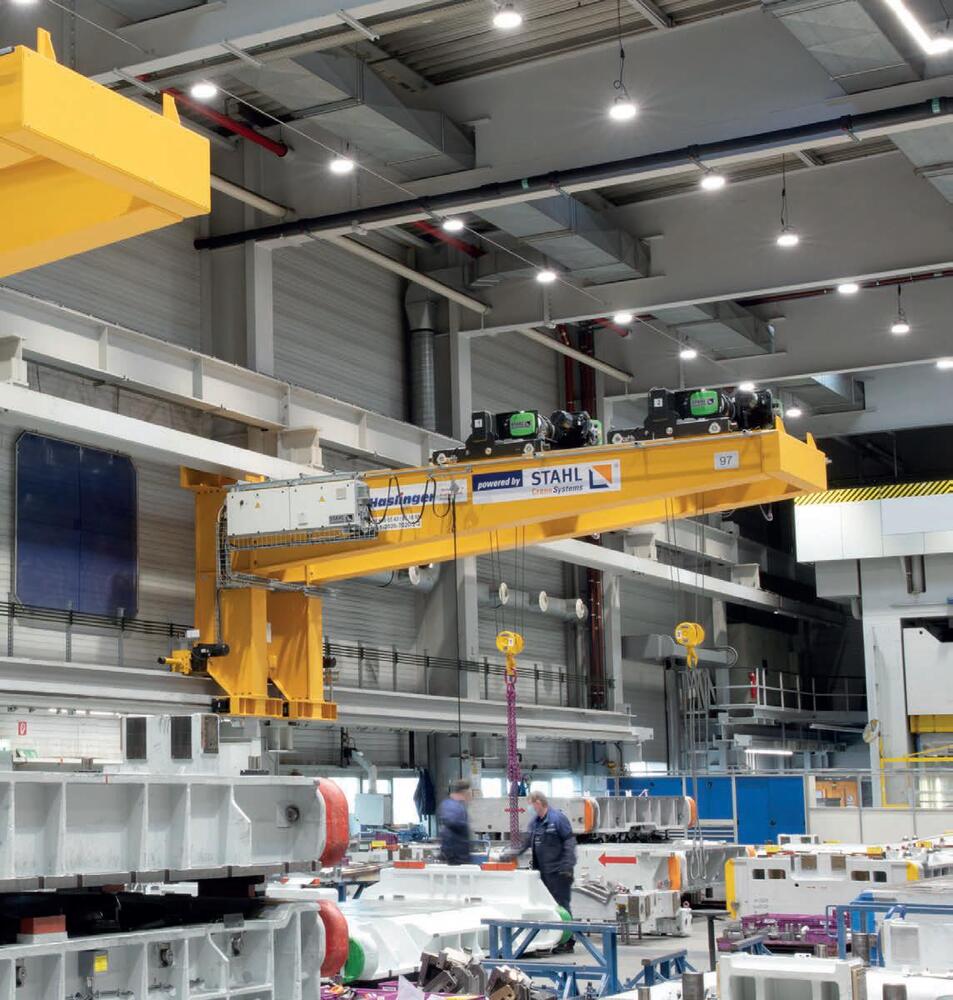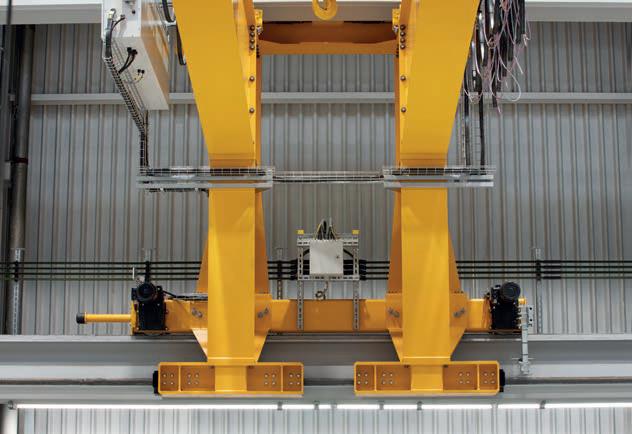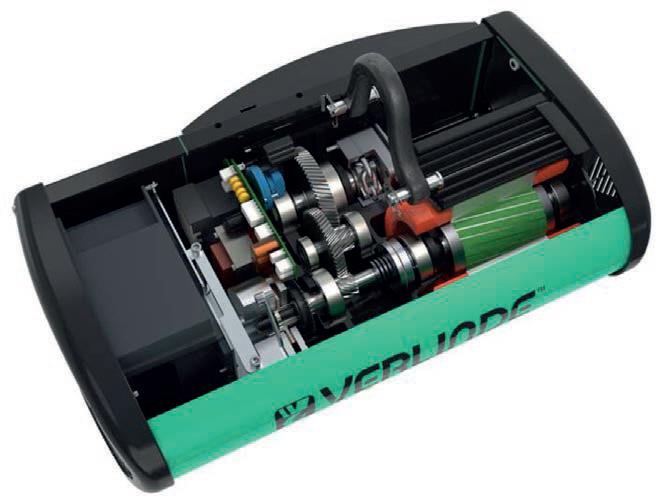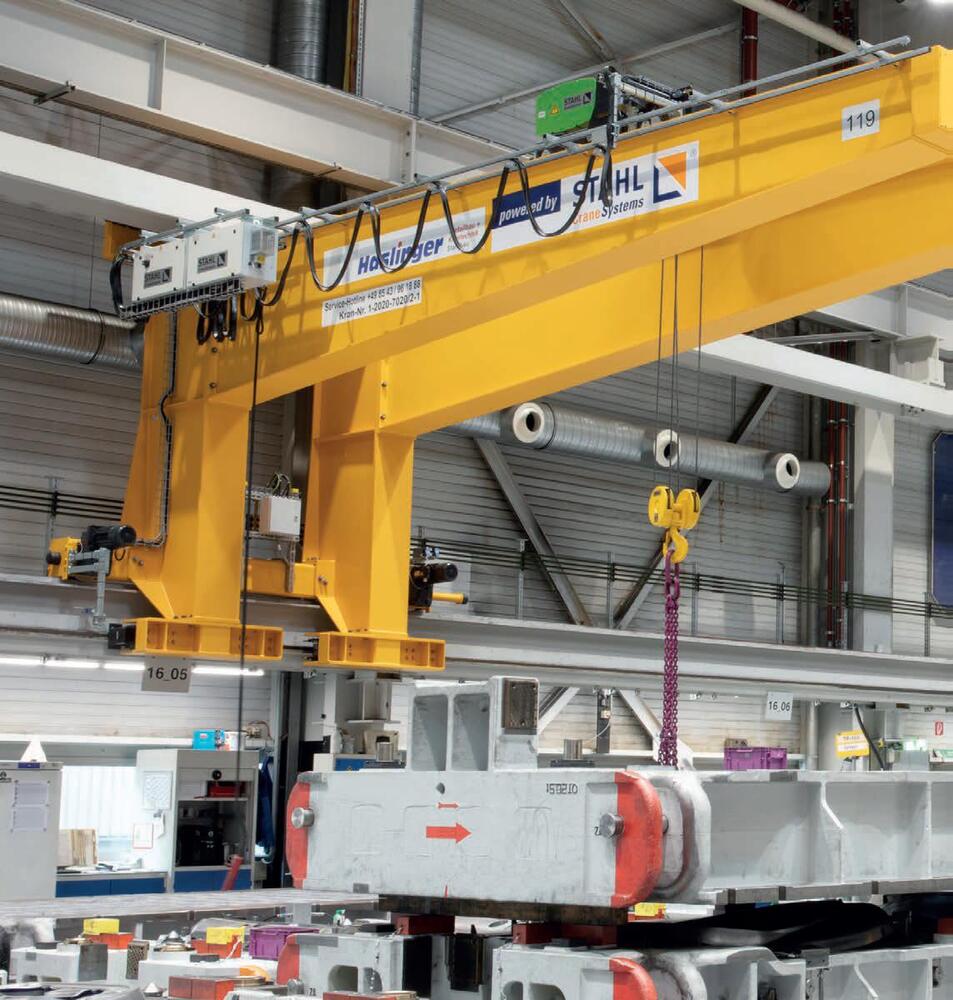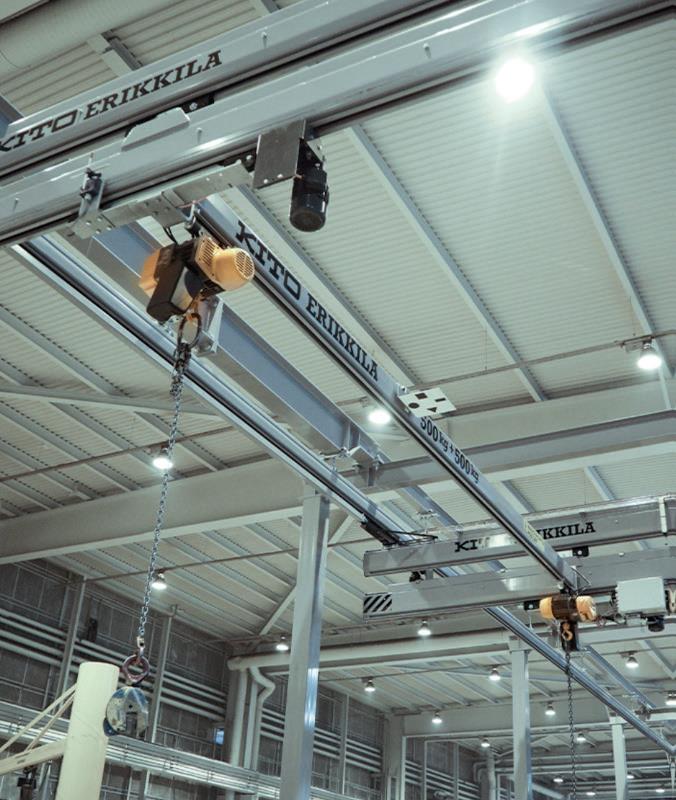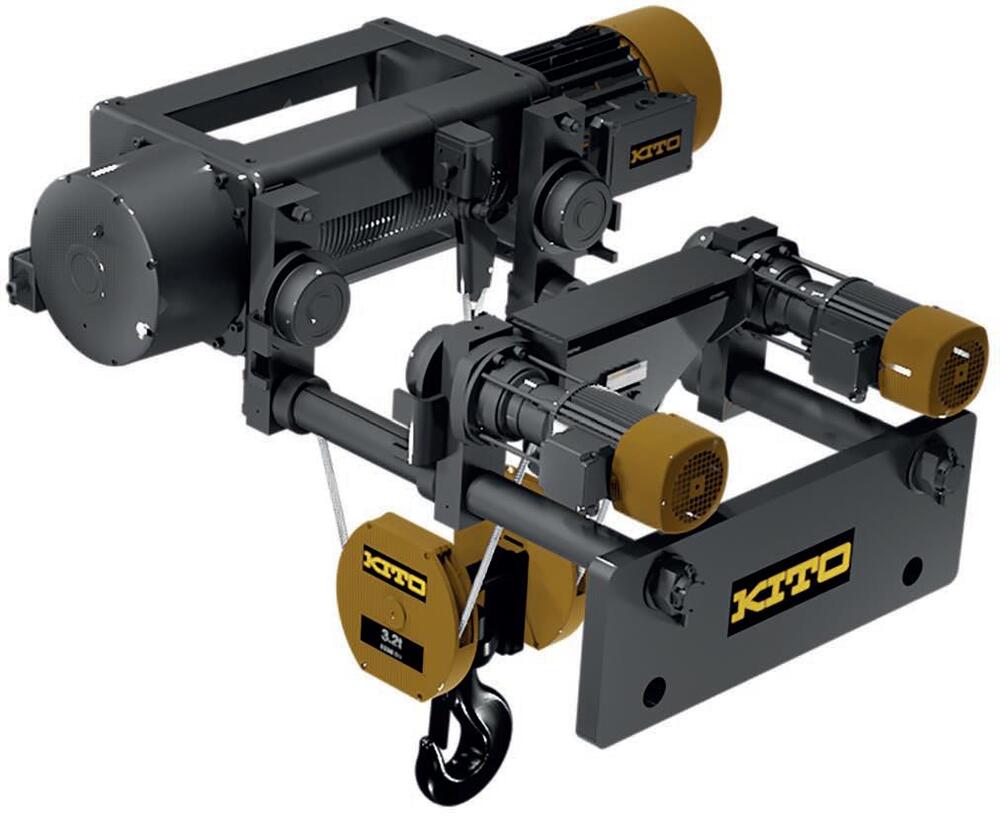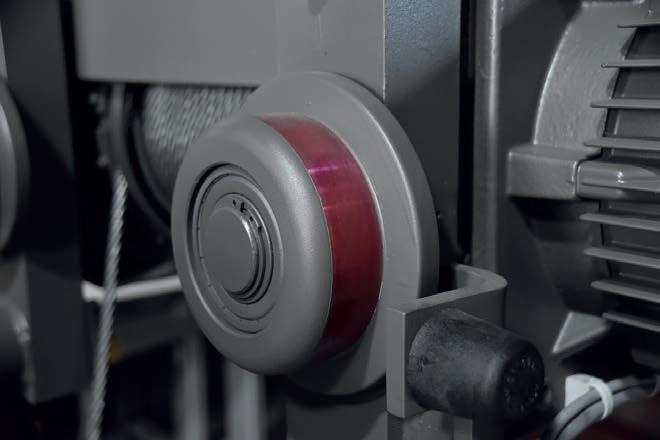Central European hoist manufacturers: giving the region a lift
14 March 2023Central Europe’s manufacturing is a major part of the global economy, and hoist manufacturing demonstrates the fact. Julian Champkin reports.
Central Europe has, of course, long been a manufacturing powerhouse, but before we talk about Central European hoist manufacturers we should perhaps clarify what we mean by ‘Central European manufacturer’.
Long-established German hoist maker Stahl is now part of US giant Columbus McKinnon, as is Pfaff-Silberblau, which continues to make lifting machinery at Kissing in Bavaria as it has since 1867. Though Columbus McKinnon describes them as ‘brands’, and in January 2022 incorporated both Stahl and Pfaff-Silberblau along with several others into a single Columbus McKinnon website, they retain their own identities and specialities, so we can treat them as separate entities and still as ‘Central European’. Similarly, Japanese company Kito has made European acquisitions: Swedish Erikkila now operates as Kito Erikkila; Dutch hoist maker Van Leusden is now Kito van Leisden, and so on. There is also, to complicate things, Kito Europe, which last summer brought out a new hoist, the RX. Slightly confusingly, the publicity photographs show it mounted on Erikkila rails, but it is the hoist that is being spoken of as new. It is, the company says, adaptable to existing structures and machinery, which would mean it can run on already existing rails – such as, for example, Erikkila ones…
Kito is calling the RX not just a new product but a new “product category”. A key feature is simplicity: it is so simple to handle that maintenance, says Kito, can easily be taken over by the operating company or a local service company.
Its electrical equipment is password-free and designed without encryption to be safe and extremely user-friendly, Kito continues. The entire electrical equipment, including overload protection, can be programmed by any electronics expert. The customer decides who takes care of the set-up and commissioning of the new electric wire rope hoist, without having to pay extra for trained staff from the manufacturer. The RX is made up of simple and easily accessible modules, so that all components can be inspected and maintained in-house by service or operating personnel, says Kito.
The RX is also said to be powerful and can be flexibly configured: as a footmounted hoist without a trolley, as a standard-headroom monorail trolley in capacities from 1.0t to 32t, or in a lowheadroom monorail version up to 16t. It is also available as a double hoist with capacities up to 100t.
It can be assembled in two- or four-rope strands, with 2/1, 4/1 or 4/2 reeving – a threepiece rope guide ring in cast iron guides the ripe optimally onto the drum. A spring holds the rope in the rope groove to protect against damage and slack wound rope.
Gears are planetary with a linear and enclosed drive concept, and the motors have thermal monitoring. Features such as gear limit switches, weighing cells, load display, automatic load summation, remaining life time recording, anti-sway control, radio control or external auxiliary ventilation for the hoist motor can be added as options.
“The Kito RX can be adapted exactly to the customer’s needs – an absolute advantage for all businesses where a hoist needs to be replaced quickly and easily because its service life has expired, or the upcoming repair costs don’t seem profitable,” says Wolfgang Klepper, senior business development manager at Kito Europe GmbH. Suggested applications include steel mills, cement plants, paper industries or in general mechanical engineering.
Hoist maker Verlinde is, of course, French but are members of the Finnish Konecranes group. It recently introduced its new generation Eurochain VX range of electric chain hoists. The design is said to a pioneering one, with innovative technology and new materials and operating concepts, the core concept of the range is adaptability to the specific needs of the user. Key to the Eurochain VX Vario model is that its lifting speed is continuously adjustable.
Obvious advantages of this are smooth starts, quick accelerations and smoother stops, all of which contribute to optimising load-handling operations. The system makes it possible when lifting to adjust the speed of the acceleration and deceleration ramps in accordance with the load – accelerations can be up to twice as fast with lighter loads. This threshold-free variation of the lifting movements ensures extremely precise positioning of loads and greater flexibility of use. Minimum speeds are 0.15m/min to 0.65m/min depending on the version, which means that even the least experienced operators can handle loads without risk of damage.
Continuous speed control offers greater productivity; it also reduces mechanical shocks through smoother starts and stops. Reducing the number and level of shocks to bridge, jib and structural components significantly increases the life of the structure. And continuous speed control allows the electric brake to be used first during deceleration before the mechanical brake is applied. Using the mechanical brake only as a holding (parking) brake increases its service life.
The hoist incorporates an electronic load sensor to prevent overloading, and slippage control with torque limiter. There is a 50% active damping system that reduces or eliminates the polygon effect, where chain links moving around sprockets produce the effect of a varying diameter and cause the linear speed of the chain also to vary. Maximum lifting speed is 30m/ minute, and maximum capacity is 2.5t.
Haslinger GmbH, based in based in Aldersbach-Uttighofen not far from Passau in Lower Bavaria, is a crane manufacturing partner of Stahl, which we mentioned earlier as German in spirit if American in ownership. Haslinger has recently completed an installation of an unusual type of wall-mounted travelling overhead jib crane that should perhaps be better known that it is. Unlike a conventional gantry crane, it runs on tracks on a single wall only, rather than on two parallel sets of tracks, and instead of a spanning girder it uses a jib to access the work area.
Making the concept a reality is all the more creditable in that cranes are only a part of Haslinger’s business. “We are a classic steel construction company. In addition to designing and building cranes we also manufacture, for example, stage sets, platforms, and staircase structures,” says Robert Seibold, head of crane technology at Haslinger. The company has been working with Stahl for more than 12 years, is its first certified crane manufacturing partner, and has taken over the entire steel construction part in joint projects.
A speciality is building customised crane systems using standard crane components from Stahl. “And, as you can see from this particular project, these are sometimes very special solutions,” says Seibold.
The double girder wall-travelling cranes replace existing systems in a hall in which large tools to produce car body components are inspected and prepared. The hall already contained older wall-travelling cranes, each with a lifting capacity of 5.0t, but they were no longer able to cope with future requirements and were therefore to be replaced by new cranes, each capable of lifting 8.0t.
“Compared to overhead travelling or suspension cranes, such cranes are rarely required,” says Seibold. Here, though, they gave more flexibility and performance over a large area. The four wall-travelling cranes serve as a supplement to an existing more conventional bridge crane and create a further plane of movement for multi-layered work processes. With a jib length of 8.4m each and a crane runway length of 80m, the new cranes can reach almost every point in the 1,600m2 hall. The wall-travelling cranes can therefore serve all work areas simultaneously without having to use the main crane, which may not be immediately available because it is needed in another part of the hall.
The project was divided into two construction phases, with two wall-travelling cranes being installed on one side of the hall in each phase. “We had already prepared and reinforced the crane runways beforehand so that they could carry the loads of the new cranes,” says Seibold.
Haslinger chose an SH 5025-20 electric wire rope hoist with a reduced safe working load (SWL) of 8.0t and a lifting height of 6.0m from Stahl’s standard range as the hoist for one of the two double girder wall-travelling cranes. The SH series wire rope hoists come in five sizes with 27t SWL variants from 500kg to 32,000kg. The compact, low-maintenance solutions can be used for stationary lifting operations but here they were on an overhead trolley that has a maximum travel speed of 10m/min.
Although all hoists used in this project are standard wire rope hoists, they were customised according to the customer’s wishes and equipped with additional safety technology. “The wire rope hoists normally achieve a maximum lifting speed of 10m/ min. However, the customer wanted the speed to be halved, which we solved with an intermediate gear. A lifting speed of now 5m/min now gives even higher precision when lifting and lowering loads,” says Seibold.
An essential component is the Stahl SMC 22 multi-controller for continuous load measurements. It has automatic load control that immediately switches off the hoist in the event of an overload. The SMC also records a wide range of operating data in real time, including the full-load operating hours and the number of motor switching operations. The operating data can be read out and evaluated quickly and easily on a PC or laptop using Stahl’s ConfigTool.
“The prescribed annual calculations of the service life of a hoist can also be carried out very accurately with the SMC. In addition, if there should ever be an incident with a crane, the recorded data may make it possible to trace the causes,” says Seibold.
The second wall-travelling crane is identical in design to the first but has some further special features. Two hoists travel on the upper flange of this crane – these are SH 6040-10 electric wire rope hoists, also with a lifting height of 6.0m, with doublegrooved rope drum and 4/2 reeving, which prevents lateral hook movement when lifting and lowering loads.
The hoists permit either single or tandem operation and thus offer a high degree of flexibility in use. Load aggregation with a safety programmable logic controller (PLC) is integrated for tandem operation. It permanently measures and monitors the loads on both crane hooks, ensuring that the permissible total load capacity of 8.0t is not exceeded. “In tandem operation, it is possible to transport longer tools more easily and position them more precisely. At the same time, the load is kept in a stable position on both hooks, which also prevents swinging of the load. In single operation the tools can in turn be turned and rotated safely,” explains Seibold. “In my view, load aggregation with a safety PLC is a certain selling point for Stahl wire rope hoists”
The cranes’ travel axis is also a special design. It consists of three crane runways on each side of the hall. Each crane has two frequency-controlled travel drives on the lower end carriage, which runs on the middle crane runway. With four-wheel blocks each, the very high-pressure forces are distributed evenly on the lower crane runway.
Finally, a crane distance control was installed on all cranes. A photo-electric barrier with optical sensors prevents accidental collision of two cranes in operation on one travel axis.
The car manufacturer was obviously very satisfied with the results of the project because having completed the first two wall-travelling cranes Haslinger received an order for the two additional ones, which are identical to the first solutions.
Kito Erikkila Supplies Finnish Shipyard
The Meyer Turku shipyard in Finland has a history that goes back almost 300 years. Today it is one of the world’s leading builders of cruise ships, specialising in complex, innovative and environmentally friendly vessels.
The shipyard is continuously developing its processes towards lean manufacturing methods. One project has been to bring T-beam production, for hulls, into its own hands, to manufacture them more flexibly with in the shipyard areas with their own production line.
The T-beams are transported step by step from one workstation to another throughout the production process, using a new light overhead crane system from Kito Erikkila.
Although it is a light crane, it is impressive. The length of the crane track is 75m, and the crane span is 7.5m. Moving the beams out from the production line is realised using a radio-controlled telescopic bridge, which allows the beams to be loaded to the reach of a forklift outside the support frame of the crane. Inverter drives, for both transfers and lifts, make moving from one station to another easier. Positioning of the pieces is precise and easy, which speeds up throughput. The installation schedule was tight but the entire project, from design to deployment, was completed in only two months.
